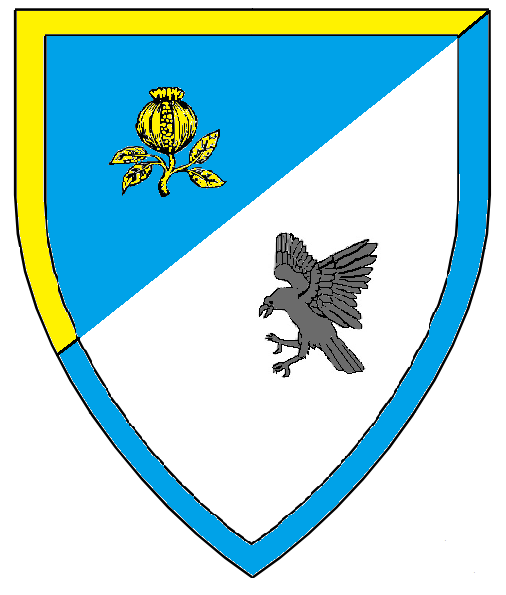I haven't had a lot of luck with events this fall at all. First of all, it was still in the 90s here until like a week ago, so I really didn't want to be outside all that much. One of the events I was going to go to in September was canceled at the last minute; another one at the beginning of October I managed to go to, but I couldn't camp, and it was so hot and so much walking around a very BIG and extremely dusty event site, and between the heat and my allergies I didn't stay long.
Last weekend, however, was the Barony of Bjornsborg's Fall Faire, which I wouldn't have missed for the world. The weather has finally cooled off, and Bjornsborg really knows how to put on an awesome event. There were classes, competitions (no A&S, sadly), games, a couple of great bardic circles, a tavern with food and drink for lunch, and a feast on Saturday evening. Court that night was long, but hilarious; and it rained like crazy and even hailed a bit during the first half of court, which made it kind of hard to hear what was going on at the front, but it was still a great court.
Me and Hersir Ivar 🫶I also got to try out my new campsite this event, which was kind of exciting for me. I got a new tent which is bigger than my old one, and sets up "instantly" (seriously, it takes me like 5 minutes to put it up all by myself, and I LOVE that!) I also got a new air bed which is wider than the twin sized one I was using before (that I kept falling out of!), and a new rocking camp chair which is SUPER comfortable.
Big tent!This tent is big enough that I can bring my rolling garment rack for War of the Rams next month, too. It's a five-day event, and it's going to be COLD and there are tons of parties and other activities which may or may not require costume changes - and it's SO nice at WotR to be able to just hang up all my clothes instead of rooting through a plastic tote bin for them like I do at short events, especially for when I need to duck into my tent quickly in the evenings to grab a coat or other outerwear.
For my next trick, I'm going to be making a Norse klappenrock, (a short coat with a wrap-over front) for Master Ivar, complete with tablet-woven trim. He brought the fabric to me at the event, and we sat down and took some measurements and talked about styles and colors; and I'm going to be working on this between now and WotR. I'll show you when I'm done.


































